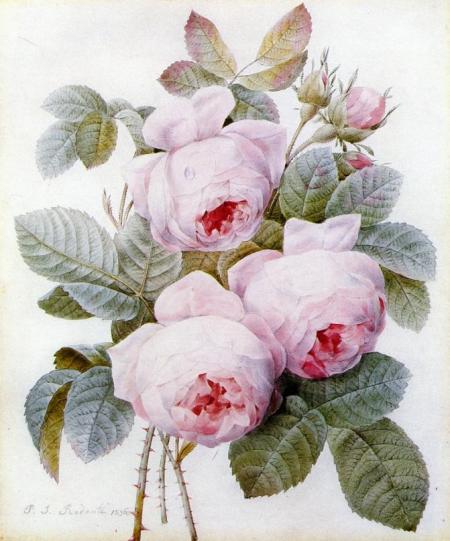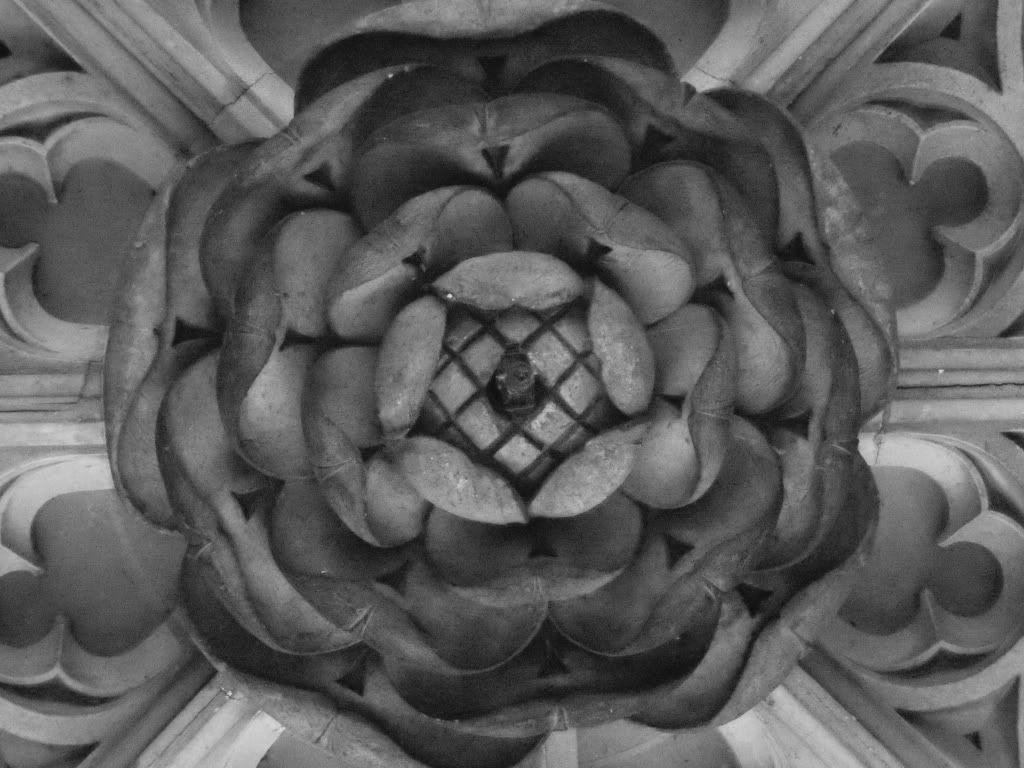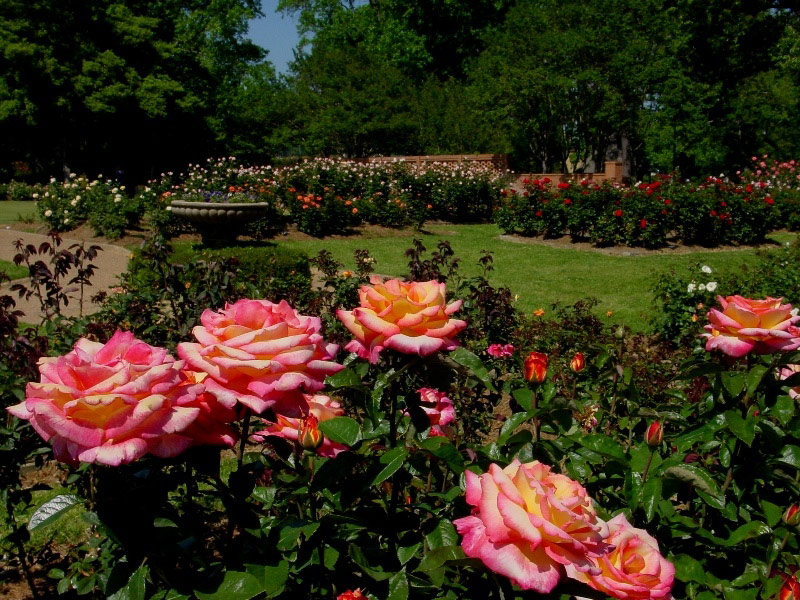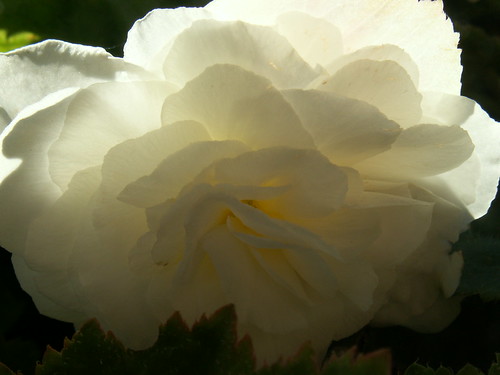 |
| 'Lady Emma Hamilton' garden roses. Image via Could I Have That |
The Rose Family
The rose is a rose,
And was always a rose.
But the theory now goes
That the apple's a rose,
And the pear is, and so's
The plum, I suppose
The dear only knows
What will next prove a rose.
You, of course, are a rose-
But were always a rose.
By Robert Frost
1. Graham Thomas, 2. Purple Rose, 3. Orange Rose, 4. White Rose, 5. red rose, 6. Blue roses in August, 7. Rose, 8. rose, 9. Rose
OK, here we go-- off on another birthday adventure, this time out in the garden! Yes, it's true, every month has its birthday flower. And June has the rose. What a lucky gal June is.
Now I must say first off- when we start getting into all the varieties of plants and the HUGE diversity of each flower, as you'll see in a minute with roses, life could get pretty complicated pretty fast. Even though I LOVED doing the birthstones, they were tons of work. I'm not complaining; it truly was fun to explore the stone for each month and I'm so happy we took a peak. But as I've mentioned before, life for me right now is a bit up in the air with transitions about to happen and I need to focus on those things. But what a better way to break from all that hub-bub than to stroll in the garden. Briefly. Let me say again-- briefly.
Unless a particular month's flower is just so ravishingly beautiful that I can't drag myself in from the garden. And seeing as we begin with June's rose, well.... we could be in trouble. But let's hit the garden path and see what we can see.
Let's look at some basic plant structures, just to get us started, since we'll most likely be using these terms over the next year. You avid gardeners and horticulturalists can correct and clarify where needed (Thanks, Mom) but we'll keep this very simple. No cellular level phytotomy, probably.
 |
| Image via Rose Garden |
Let's look at some basic plant structures, just to get us started, since we'll most likely be using these terms over the next year. You avid gardeners and horticulturalists can correct and clarify where needed (Thanks, Mom) but we'll keep this very simple. No cellular level phytotomy, probably.
 |
| Image via Biology Pictures |
Sepal-encloses the immature bud before it opens.
Anther- structure where male reproduction occurs. Produces pollen (sperm).
Ovule- reproductive structure inside ovary. The "eggs".
Ovary- base of pistil which holds the ovules.
Stamen- consists of filament and anther (male reproduction).
Stigma- upper part of pistil where pollen is deposited.
Style- stalk between stigma and ovary.
Carpel or Pistil- ovary, stigma, and style (female reproduction). Receives the pollen at the stigma, which travels down the style to fertilize the ovule (egg) within the ovary.
Filament- thin, stem-like stalk, supporting anther.
Petal- colored leaves on the flower. Attracts pollinators, like bees and butterflies.
A very comprehensive look at flower structure, fertilization, and fruit development can be found at the Marietta College Biology Lab site by clicking here. Remember, I'm trying to keep things brief here. If you're interested, the American Rose Society has three pages of terminology, which you can find by clicking here.
Note to teachers, students, the fabulously curious, and anyone who needs great biology pictures: go to Biology Pictures and bookmark it. Outstanding visual aids.
SO... all that said, here is June's rose, exposed ....
 |
| Cross-section of developing rose, showing ovary and the white ovules within. Image via Wikipedia. |
The name "rose" comes from the Latin rosa. However, it passed through the Oscan, colonial Greek, Aeolic, Aramaic, Assyrian, and Old Iranian languages before becoming rosa. The word "rose" itself had many transitions, beginning as war, then ward, warda, vard, wurtinnu, wurrda, wrodon, rhodon, and, finally, rosa.
 |
| 32 million year old fossilized rose. Discovered by Steven Manchester in the John Day Fossil Beds of eastern Oregon Image via Northwest Rose Historians |
There is fossil evidence of roses existing 35 million years ago (even though they barely last a week in a vase). Cultivation of roses probably began 5000 years ago in Asia. Cultivated roses weren't introduced into Europe until the late eighteenth century. These introductions came from China and were repeat bloomers, making them of great interest to hybridizers who no longer had to wait once a year for their roses to bloom. Most modern-day roses can be traced back to this ancestry. The first true primary red rose seen in Europe was 'Slater's Crimson China,' introduced in 1792 from China, where it had been growing wild in the mountains. Today there are over 30,000 varieties of roses and it has THE most complicated family tree of any known flower species. A rose is a woody perennial of the genus Rosa, within the family Rosaceae. There are over 100 species. Click here for a list of rosa species.
Kingdom: Plantae
(unranked): Angiosperms
(unranked): Eudicots
(unranked): Rosids
Order: Rosales
Family: Rosaceae
Subfamily: Rosoideae
Genus: Rosa
Notice the Family name? Rosaceae-- this is where we get the name for the skin condition marked by red flushing called rosacea. That's just an aside because I'm sort of easily distracted.
 |
| Image via It's About Time |
“It was roses, roses all the way.”
- Robert Browning
Experts today tend to divide all roses into two groups. There are "old roses" (those cultivated in Europe before 1800) and "modern roses" (those which began to be cultivated in England and France around the turn of the 19th century). Until the beginning of the 19th century, all roses in Europe were shades of pink or white. Our romantic symbol of the red rose first came from China, as mentioned above.
 |
| Soul of the Rose, by J.W. Waterhouse (1908) Image via WebMuseum |
There are, however, several ways to divide roses by type. All-America Rose Selection lists seven types of rose: Floribunda, Hybrid, Grandiflora, Shrub & Landscape, Climber, Miniature, and Tree Roses. Rose Gardening Made Easy identifies three types: species rose (wild roses), old garden roses (those cultivated before the introduction of the hybrid tea rose in 1867) , and modern roses (those cultivated after 1867). The old and new roses each are further subdivided. We could go on for quite some time with this discussion and probably most avid rose-lovers would disagree with each other. Let's just say it's a family tree that is difficult to climb.
Greek mythology tells us that it was Aphrodite who gave the rose its name, but it was the goddess of flowers, Chloris, who created it. One day while Chloris was cleaning in the forest she found the lifeless body of a beautiful nymph. To right this wrong Chloris enlisted the help of Aphrodite, the goddess of love, who gave her beauty; then called upon Dionysus, the god of wine, who added nectar to give her a sweet scent. When it was their turn the three Graces gave Chloris charm, brightness and joy. Then Zephyr, the West Wind, blew away the clouds so that Apollo, the sun god, could shine and make the flower bloom. And so the rose ...
There is also the legend from the Roman empire, where there was an incredibly beautiful maiden named Rhodanthe. Her beauty drew many zealous suitors who pursued her relentlessly. Exhausted by their pursuit, Rhodanthe was forced to take refuge from her suitors in the temple of her friend Diana. Unfortunately, Diana became jealous. And when the suitors broke down her temple gates to get near their beloved Rhodanthe, she also became angry turning Rhodanthe into a rose and her suitors into thorns. Another legend is that roses were thornless in the Garden of Eden. Thorns appeared on the rose when Adam and Eve were expelled.
 |
| Image via Colored Garden |
Venus, the Roman equivalent of Aphrodite, was also associated with roses. As told in Ovid's "Metamorphoses," the goddess fell in love with a beautiful mortal named Adonis. When he was killed while hunting, she wept. Wherever her tears fell on the earth, white roses bloomed. Venus is also connected to red roses. It is said that when she was walking through a garden, she stepped on a thorn and her blood colored the roses red. Besides the Rodanthe legend, Romans also believed that Cupid gave the roses their thorns. According to their mythology, while Cupid was shooting arrows, a bee stung him. He jerked, and his aim was thrown. The arrow landed in Venus's rose garden and the landing of its pointed tip caused the roses to grow thorns.
 |
| Tea Rose. Image via How Stuff Works This link takes you to great information about the Tea Rose. |
In Crete, there are Frescoes which date to c. 1700 BC illustrating a rose with five-petalled pink blooms. Discoveries of tombs in Egypt have revealed wreaths made with flowers, with roses among them. The wreath in the tomb of Hawara (discovered by the English archaeologist William Flinders Petrie) dates to about AD 170, and represents the oldest preserved record of a rose species still living. Clay tablets excavated in the temples of Ur in Iraq speak of the delivery of rose water intended for the sultan of Baghdad. The sultan used no fewer than 30,000 jars of rose water a year, to make his rooms smell nice for his extensive harem. The Saracen general Saladin sent camel caravans loaded with rose water through his empire to cleanse the mosques after 'impure' crusaders had occupied the prayer rooms.
 |
| Yellow Golden Celebration Roses. Image via Rose Gardening Made Easy |
It is said that the floors of Cleopatra's palace were carpeted with delicate rose petals, and that Confucius had a 600 book library specifically dedicated to the rose. Napoleon's wife Josephine so adored roses, she grew more than 250 varieties. It is in her gardens that the Belgian painter Pierre-Joseph Redouté was inspired to paint roses. His rose paintings are considered to be the finest rose paintings ever and his book Les Roses the finest collection of rose engravings.
 |
| "Rosa Alba Regalis" 1817 by Redoute. Original print available via Stonegate for $3850. |
 |
| Image via Jane Austen's World |
During the fifteenth century, the factions fighting to control England used the rose as a symbol. The white rose represented York, and the red rose symbolised Lancaster. Not surprisingly, the conflict between these factions became known as the War of the Roses.
In ancient times the rose was painted on the ceiling of the chamber where secret meetings were held to signify that nothing that was said in the room would leave the room. This comes from the Latin from meaning "under the rose". The rose's connotation of secrecy dates back also to Greek mythology. Aphrodite gave a rose to her son Eros, the god of love; he, in turn, gave it to Harpocrates, the god of silence, to ensure that his mother's indiscretions were not disclosed. Paintings of roses on the ceilings of Roman banquet rooms were also a reminder that things said under the influence of wine (sub vino) should also remain sub rosa. In the Middle Ages a rose suspended from the ceiling of a council chamber similarly pledged all present (those under the rose) to secrecy. Hence our phrase sub rosa, for secret or private.
 |
| Rose on the ceiling of Hampton Court Palace, England, summer home to Henry VIII. Image via JosephFM Lib-ing in the UK |
Until the early 19th century dried rose petals were believed to have mysterious powers. Napoleon gave his officers bags of rose petals to boil in white wine, to cure lead poisoning from bullet wounds, Even today, rose water is still used to refresh the hands before a feast or festive greeting, from the Middle East to northern India. Monastery gardens of Medieval England were full of roses; roses were closely associated with the church, particularly the wild red rose which was considered to represent the blood of Christ and each of its five petals represented his five wounds. Rose hips were used to make rosaries and many Rose windows are found in English cathedrals.
The medicinal uses for our rose are seemingly endless. I personally cannot verify these uses and in fact do not endorse them here simply because I don't know if they are effective or even safe. BUT... some uses include rose tea to bring down a fever, alleviate skin rashes, or boost the immune system's ability to fight colds. Rose water is often used to refresh skin and alleviate irritations. It is used in aroma therapy to reduce anxiety and depression. Rose hips are the "fruit" of the rose. The hip develops at the base of a pollinated flower and contains the seeds. Rose hips usually remain green and hard until the first frost, when they turn red or orange and soften a little. The nutrient content is highest at this time. Rose hips make delicious tea with a naturally sweet, citrusy flavor. Hips are used in cooking, where they add flavor as well as nutrition. Besides the high vitamin C content, rose hips contain vitamins A, B3, D, and E. Hips are a source of bioflavonoids, flavonoids, fructose, citric acid, and zinc. The bioflavonoids in rose hips have been shown to provide pain relief for people who have osteoarthritis. Studies in Denmark indicated a decrease in patients' need for other anti-inflammatory drugs when they took powdered rose hips over a three- to four-month period. But again, I leave it up to you to determine the accuracy and safety of using roses medicinally. I personally have used rose petals to make a delicately flavored Rose and Lavendar Rhubarb Jam. And of course roses are so ubiquitous to perfumes that I don't think we even need to elaborate. One of my top two favorite perfumes is Tea Rose by The Parfumer's Workshop. (The other is Chanel Mademoiselle, just to give a shout out). Beautylish has three easy rose skincare recipes for summer skin care. I've used the refreshing toner rosewater recipe and it's lovely. As Beautylish notes, be sure to do a test patch first before you dive into new homemade recipes.
 |
Image via Beautylish
|
If Confusius had 600 books about roses, there is no way I'm even going to attempt to discuss growing roses. The American Rose Society has anything you could ever possibly want to know about growing and caring for roses. Other places you might want to check out include All-American Rose Selections, Fine Gardening, and Growing Roses. Of course you can do your own web search or library/bookstore search, contact your local Extension Service as well.
Rose colors have a long history of specific meanings:
Red Roses….. True Red exemplifies lovers, Fiery Red exhibits high passion, Cardinal Red speaks of great desire.
White Roses….. Purity, innocence, loyalty and sincerity are conveyed. Known as the “bridal rose”, the rose of confession and of servitude. They also represent humility, youthfulness and charm.White Roses in Bud is a sign of a girl too young to love.
Yellow Roses….. A symbol of jealousy in Victorian times, now yellow is friendship, happiness within the home, or a message of “I’m sorry”. Joy and friendship - yellow roses don't specifically show love. They can also represent starting over,or a new beginning. Yellow tipped with red shows friendship falling in love.
Pink Roses….. Dark Pink or Hot Pink conveys thankfulness. Other hues may indicate romance, joy, elegance, admiration or beauty. To give pink roses shows grace, joy, and gratitude. Pale pink also has the meaning of fun attached to it.
Orange Roses.... Desire and enthusiam. These would be a great choice to give to someone if you want the relationship to develop further.
Green Roses….. Fertility is symbolized by the green rose; also fruitfulness, calm, self-respect. Well-being; may provide a negative force through envy, “the green eyed monster”.
Purple Roses….. Lavender is a sign of love at first sight; enchantment, wonder, impossibility, royalty and control.
Deep purple can be used as a memorial rose for a spouse who has passed, or as love long lasting for anniversaries of 25 years and more.
Blue Roses….. Rarely found in a natural state, the blue rose can be tied to the lavender; its closest relative on the rainbow scale. It means unobtainable, impossible love. I remember seeing a blue rose in a gardening cataloge once and I have to admit that it wasn't very pretty. Kind of weird.
Peach Roses….. An unspoken “thank you” or “I appreciate you”.
Black Roses….. An expression of sorrow or death; often used for funerals. They can also be a bad sign or omen. Most "black rose" are actually deep deep shades of red (or dyed) as black is not a natural color for roses.
Leaves of a rose bush are a sign of hope while a crown of roses represents virtue or reward.
Love Letter Box has a nice chart of the rose colors and their meanings as well as of the meanings of number of roses. For example, one rose means loves at first sight, fifty roses mean regretless love, one hundred roses means devoted couple to a ripe old age, and so forth.
 |
| Tyler Rose Garden. Image via Garden Visit |
The Tyler Rose Garden in Tyler, Texas is the world's largest rose garden at 14 acres with over 38,000 rose bushes of at least 500 different varieties, from tall grafted rose trees to miniature roses no larger than a dime. I used to live in Tyler and the gardens are stunning. Be sure to take your allergy medicine if you go when the blooms are at their peak. Additional info can be found here.
OK then- this has been fun and we could continue with our rose education for days and days, but I think this gets us off to a good start. This post got to be waaaayyyy longer and muuuuuch more involved than I plan to do for the birthday flowers posts, but this month's flower is a rose and my goodness they're gorgeous.
 |
| Image by Rose Fire Rising via Flickr |
Let's finish up our look at June's rose with a rose butterfly, of course: the Crimson Rose, found in India, Sri Lanka, and possibly on the coast of western Myanmar.
 |
| Image via Wikimedia Commons |
Thanks so much for visiting and please do stop by again. Next time we'll do a little crafty thing.




Awesome! Simply Awesome! What a fantastic effort to bring us all this information and lore and wonder! I can't imagine the time you put into your research but I can easily see that you certainly have a talent for putting it all together into a fascinating read.
ReplyDeleteThank you!
Thanks Pam, you're a sweetheart for your kind words. It's so interesting once I get started "researching" that it's more like play time and discovery. It really is fun and I think it brings a different perspective when out poking around in the garden.
ReplyDelete